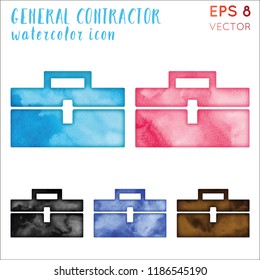Prepare Your Wall Surfaces For Painting With Essential Suggestions And Techniques That Assure A Remarkable Surface-- Uncover The Essential Actions To Raise Your Task
Prepare Your Wall Surfaces For Painting With Essential Suggestions And Techniques That Assure A Remarkable Surface-- Uncover The Essential Actions To Raise Your Task
Blog Article
Article Created By-Bisgaard Zachariassen
When you're prepping your walls for paint, it's crucial to follow a methodical procedure to ensure a remarkable coating. Start by examining Learn Even more Here for any kind of damages; this step can make or damage your project. Once you have actually recognized any kind of problems, cleansing the surface appropriately is important, as an unclean wall can affect paint attachment. Afterwards, you'll need to patch any type of flaws and apply a guide. However there specify techniques and tips that can raise your preparation video game-- let's check out those further to accomplish the most effective results.
Assessing Wall Surface Condition
Before you order your paintbrush, take a moment to evaluate your wall surfaces' problem. Look for any noticeable damage like splits, holes, or peeling off paint. These flaws can affect how the paint sticks and looks once it's dry. If you see any kind of substantial damages, you'll require to focus on repair services before diving right into paint.
Look very closely at the appearance of your wall surfaces. Is the surface smooth, or is there appearance that might call for special factor to consider? Smooth wall surfaces generally need much less prep, while distinctive surface areas might need more time to paint evenly.
Also, consider the previous paint work. If the old paint is glossy, it mightn't permit brand-new paint to stick effectively. You'll need to know if your wall surfaces have actually been painted with oil-based or water-based paint, as this can affect your selection of guide or paint.
Finally, take note of any type of moisture concerns. If you see indicators of water damage or mold, address these troubles promptly to avoid more complications.
Cleaning up the Surface
Once you've analyzed the problem of your walls, the following action is cleaning the surface area. Start by gathering your materials: a container, cozy water, a moderate cleaning agent, a sponge or cloth, and a scrub brush for tougher places.
Begin on top edge of the wall and work your way down. Mix the detergent with warm water in your container, then dip the sponge or cloth into the service. Wring it bent on prevent too much wetness on the walls.
As you cleanse, pay close attention to locations that may've built up dirt, oil, or finger prints. For stubborn discolorations, utilize the scrub brush gently to stay clear of harming the paint under. Rinse your sponge or towel regularly in tidy water to prevent spreading out dirt around.
After cleaning, it's essential to clean the walls with a wet cloth to get rid of any type of soap deposit. This action guarantees a smooth surface for the brand-new paint to stick to.
Permit the walls to dry entirely prior to going on to the following preparation actions. This extensive cleaning procedure will certainly aid produce a fresh canvas for your painting job, guaranteeing the very best results.
Patching and Priming
Patching and priming are vital steps in preparing your wall surfaces for a fresh layer of paint. Initially, inspect your wall surfaces for any kind of openings, cracks, or imperfections. Use a high-grade spackling substance or patching paste to fill up these locations.
Apply the compound with a putty knife, smoothing it out so it's flush with the surrounding surface. Enable it to completely dry totally, and afterwards sand it gently until it's smooth and even.
When you have actually patched everything, it's time to prime. Primer assists seal the patched locations, guaranteeing the paint adheres correctly and offers a consistent finish. Choose a primer ideal for your wall type and the paint you'll be making use of.
Apply the primer utilizing a roller for bigger locations and a brush for corners and sides. If your covered locations are considerably big or porous, you could want to use a 2nd coat of guide after the initial one dries.
After priming, allowed every little thing dry completely before proceeding to paint. This preparation will not only enhance the appearance of your walls but additionally lengthen the life of your paint job.
Take your time, and you'll be pleased with the results.
Conclusion
By complying with these easy steps, you can attain a smooth and specialist surface on your walls. Begin by assessing their condition, after that tidy and spot any kind of flaws prior to applying guide. Bear in mind to allow adequate drying out time and ensure everything is smooth before you dive into painting. With the right preparation, you'll establish the stage for a gorgeous transformation in your space. Currently, gather your products, take in the fresh air, and prepare yourself to paint!
